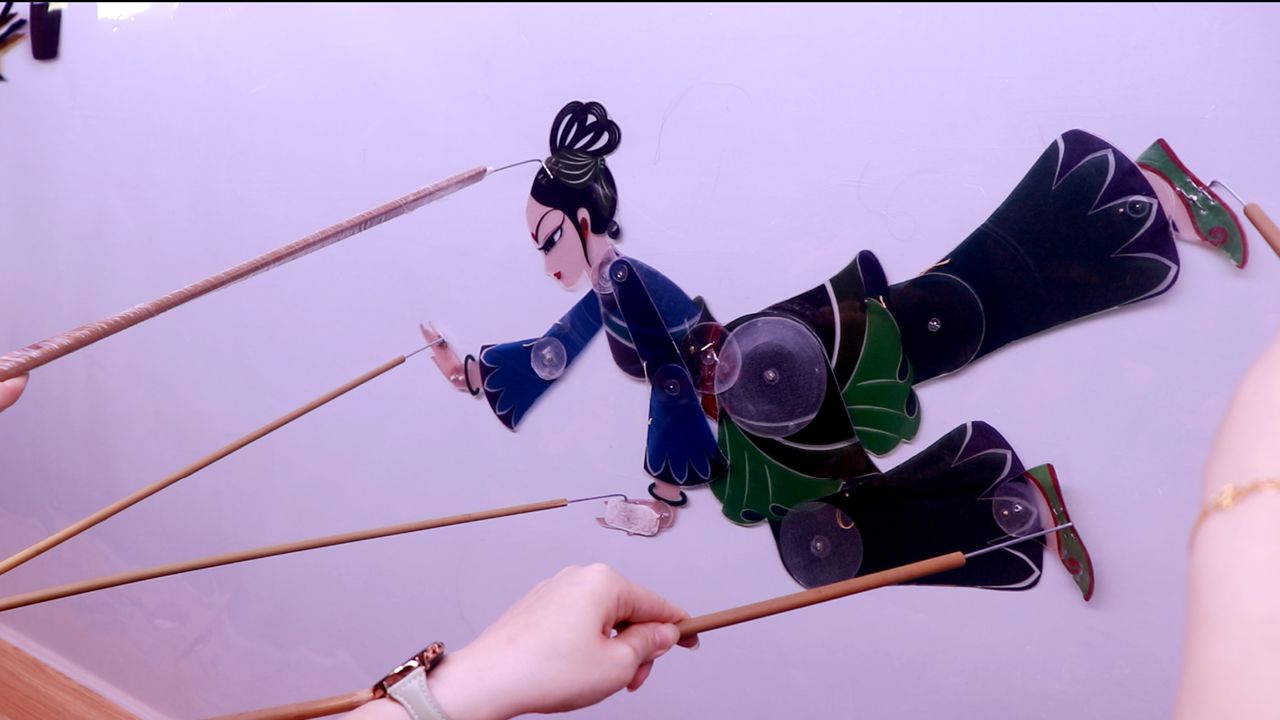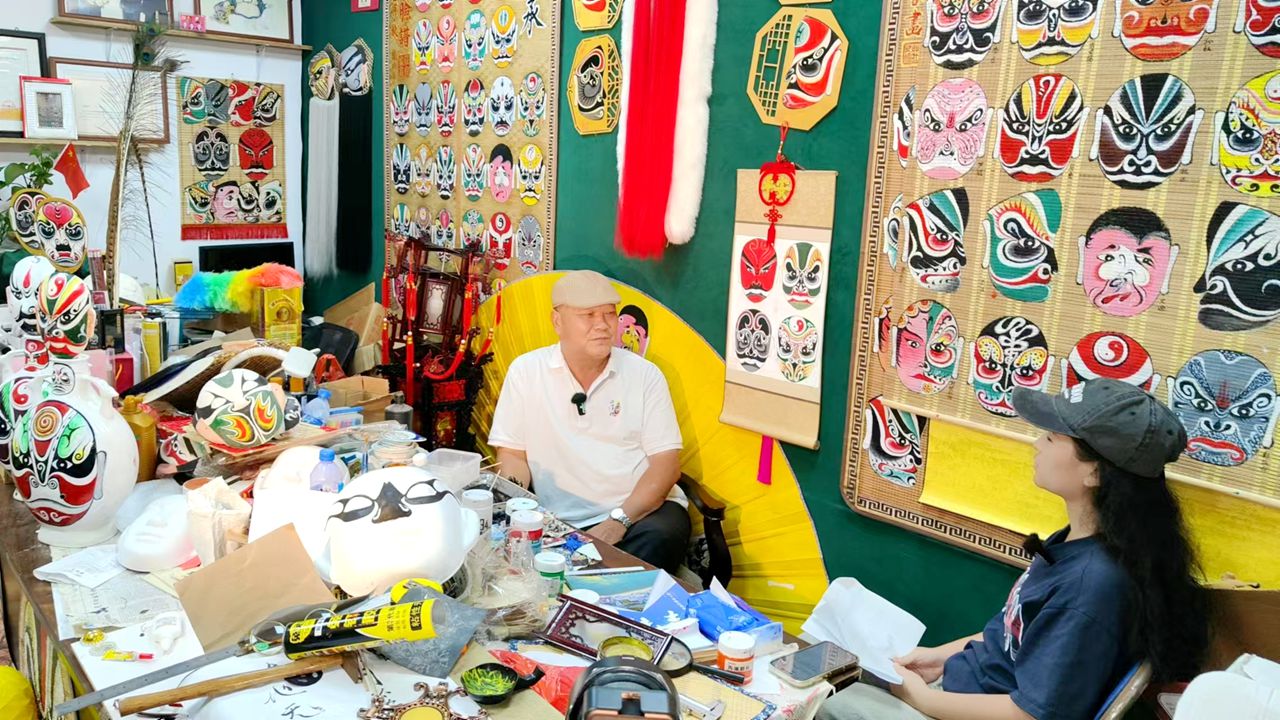In the heat of August, a team of Shenzhen University (SZU) students traveled to the rural areas of Lufeng, southeast Guangdong Province, to learn about the deep-rooted local cultural heritages.
Led by Zhang Wenwen, a faculty member of SZU’s School of Media and Communication, eight students spent a week visiting inheritors to learn first-hand about 12 cultural heritages, including shadow puppetry and Zhengzi opera.

(A craftsman is adding the finishing touches to a paper-made auspicious beast to be used in a folk performance. Photos courtesy of Shenzhen University)
“We have finished editing five videos, with seven more to go,”Chen Xinyi, one of the team members, told the Shenzhen Daily on Wednesday. When all are ready, the students will post them on YouTube, Instagram, and TikTok, so that these hidden gems of Cantonese culture will be seen by social media users around the world.
“Lufeng has a long history, and local inheritors are continuing to innovate on the heritages so that traditional forms are used to present contemporary contents,”Chen said.
During a visit to the Lufeng shadow puppet troupe, Chen and her classmates watched a live puppet show for the first time.“We watched a traditional show called‘Cockfighting,’and were totally stunned when the puppet roosters came alive on the screen,”she said.
The only remaining puppetry tradition in South China, Lufeng puppetry originated in the late Song Dynasty (960-1279), brought by migrants from the nearby Fujian Province. Thriving in the Ming (1368-1644) and Qing (1644-1911) dynasties, the art combines painting, sculpture, music, and theatrical performance.

(A piece of Lufeng shadow puppet)
Each measuring about 60 cm tall, these puppets, made of cowhides, have vivid facial features as well as limbs and bodies in the right proportion to real humans. Not only can they move at joints, but the puppets can open and close their mouths and eyes. Cloth is also used to make long sleeves for female figures to add to their elegance. Primarily based on Zhengzi opera, its music has influences from Lufeng fishermen’s tunes and local folk music. In May 2006, Lufeng puppetry was approved as the first batch of State-level intangible cultural heritages.
One video featured an interview with Chen Peiyang, who has worked 16 years with the puppet troupe.“It takes two persons to operate one puppet, and many hours of practice are required before a new show can meet the audience,”he said.“But all the effort felt worthy when the audience began to applaud us enthusiastically.”
To better promote this art, the SZU team has invited the Lufeng troupe to exhibit their puppets and give a live performance at the university later this month.

(Zhuang Lianglu, a Zhengzi opera singer, is being interviewed by SZU students)
“On Sept. 24 and 25, we have arranged for the troupe to perform puppet shows on campus,”said Zhang.“One show will focus on the story of how Chinese soldiers had fought bravely against Japanese invaders during WWII.”
Apart from shadow puppetry, the students visited and interviewed the inheritors of a rolling dragon dance, a traditional pot-making technique, paper cutting, metal sculpture, woodcarving, and Yingge dance, among others.
“I was very impressed by the meticulous steps in hand-making these crafts and the perseverance of the inheritors in honing their skills,”Chen said.“For instance, it takes more than 10 steps to craft the teethed pot, a commonplace utensil used in the Lufeng area.”
SZU’s media and communication school has always focused on preserving and promoting traditional Chinese culture. Previously, Zhang has helped organize campus fairs featuring cultural heritages as well as a course teaching kintsugi, an ancient Chinese ceramic restoration technique, to college students.
From:eye shenzhen